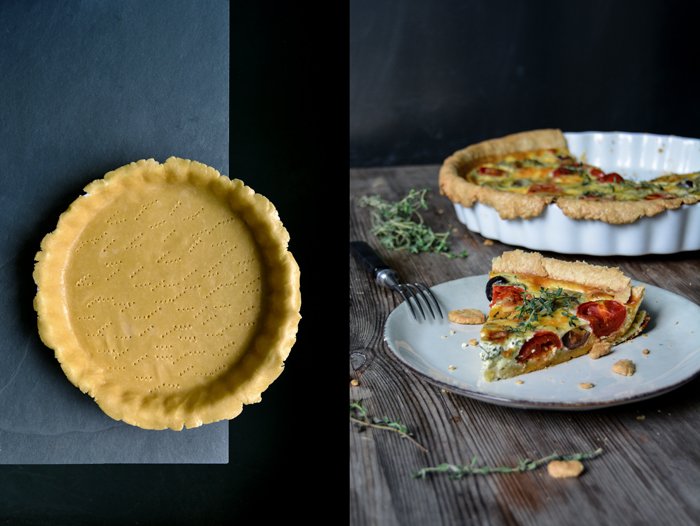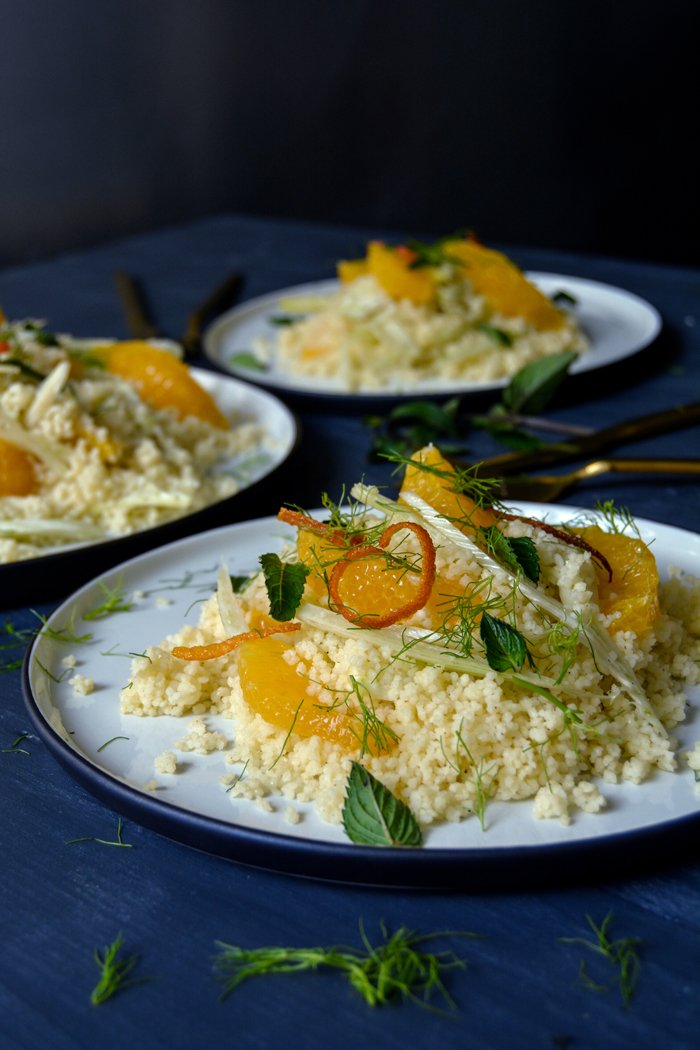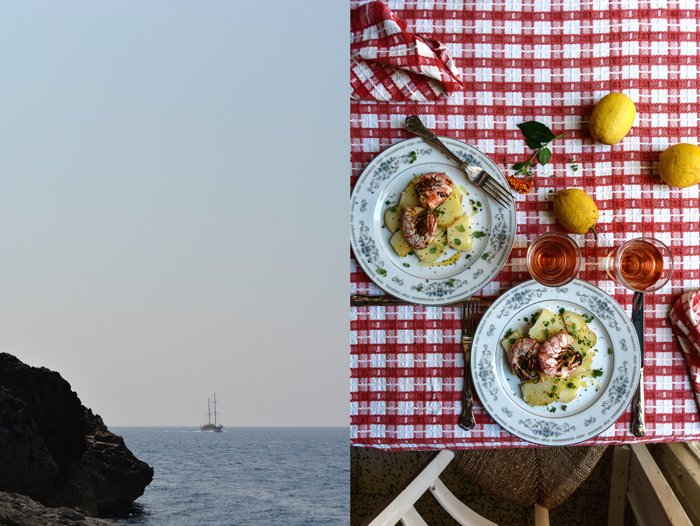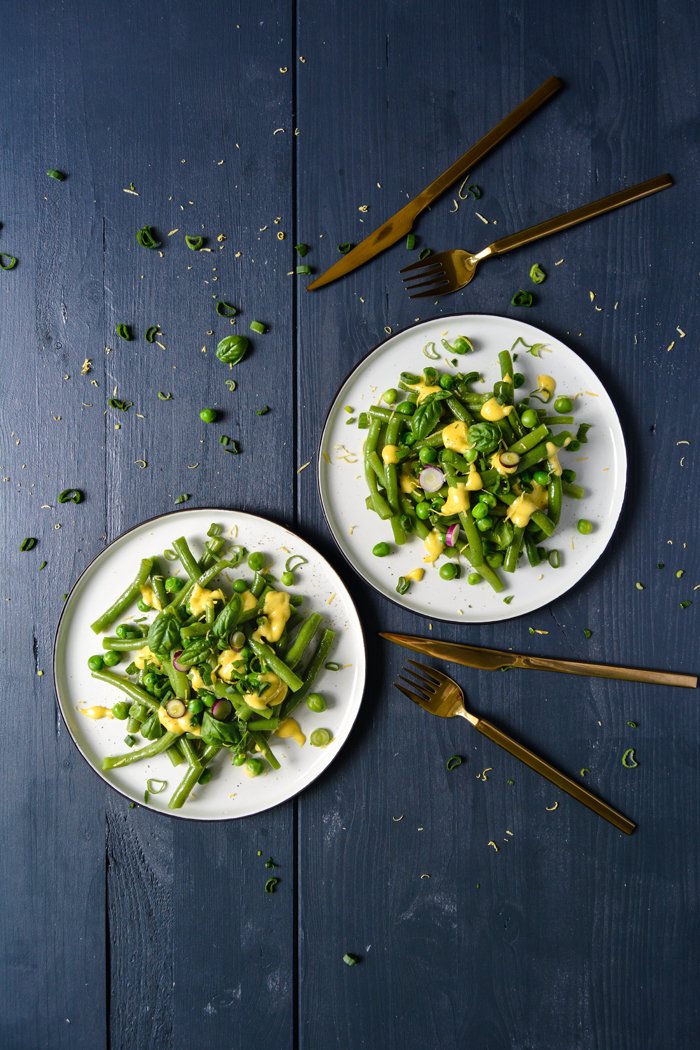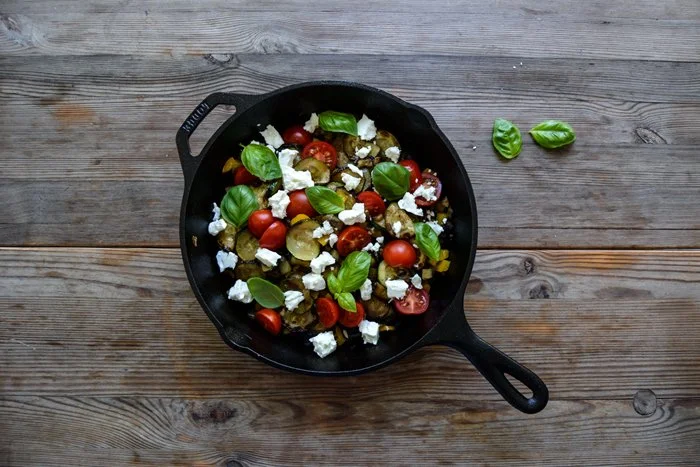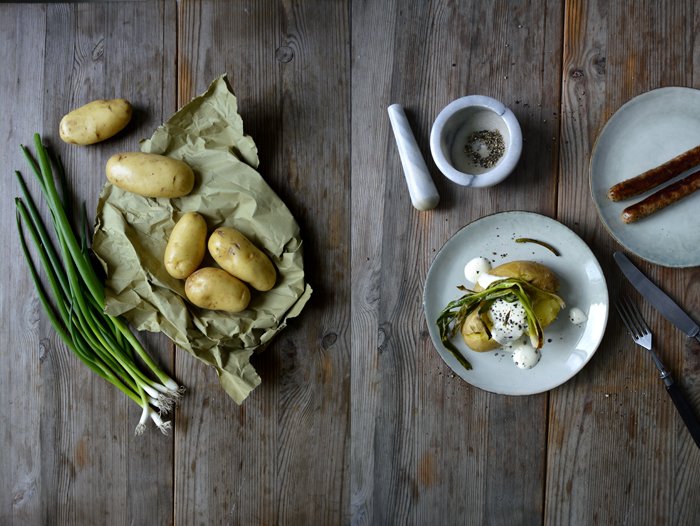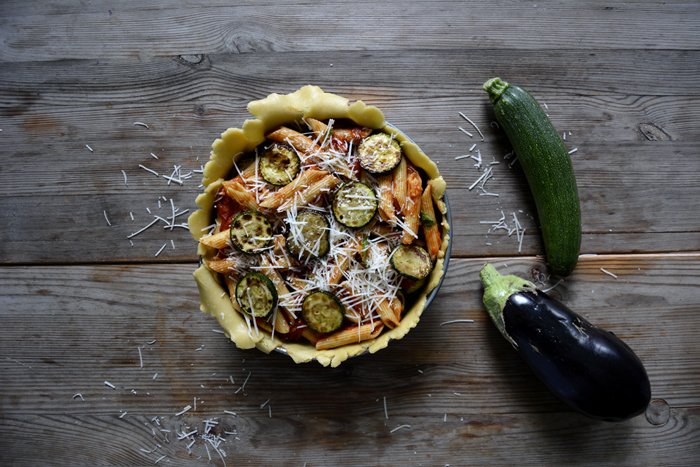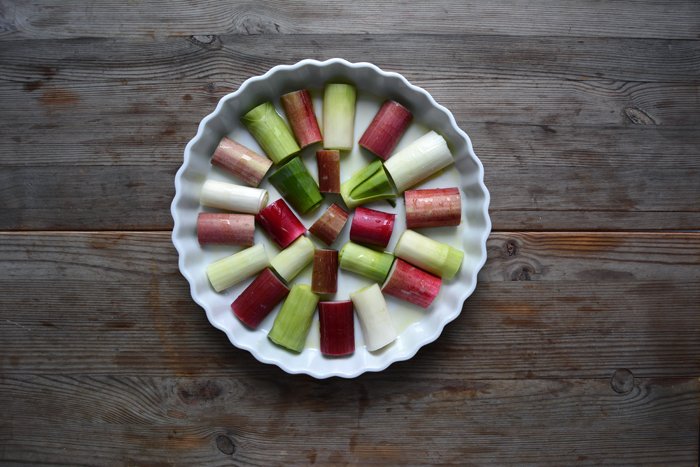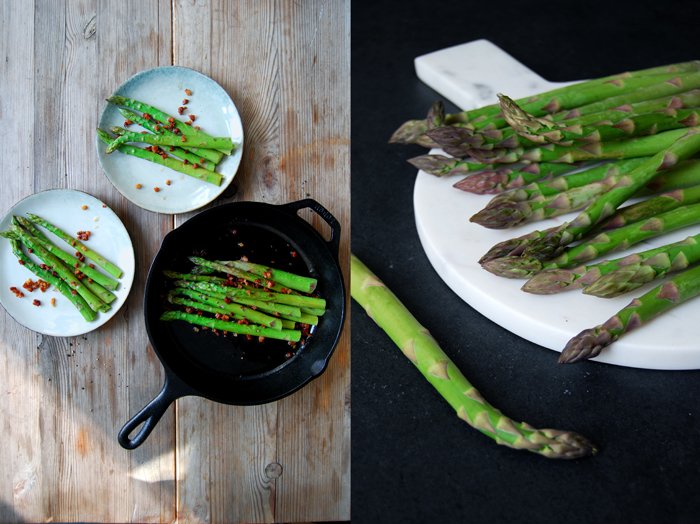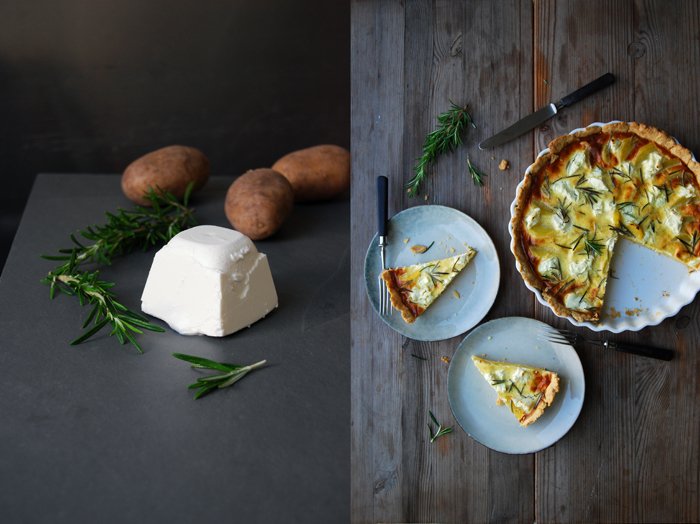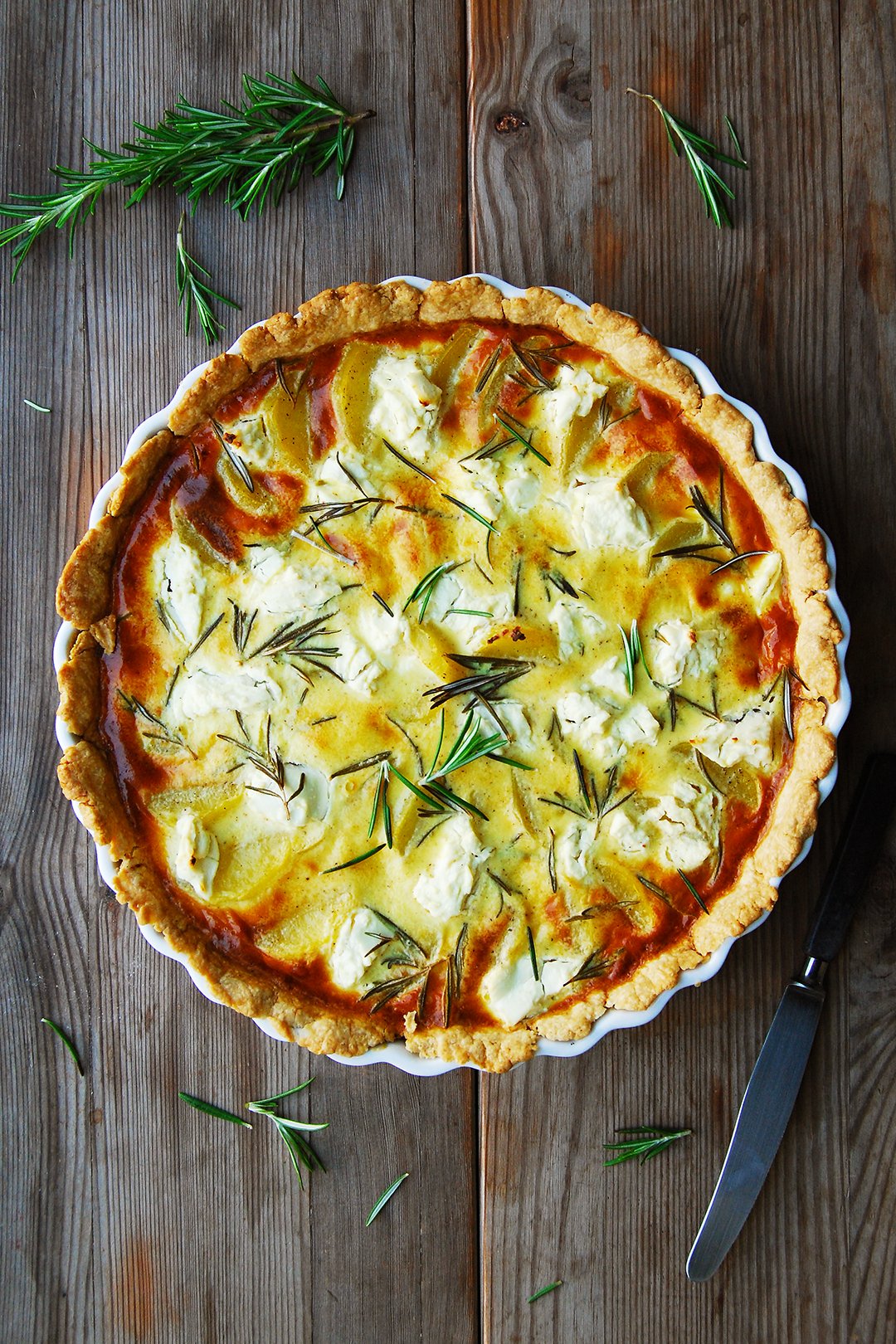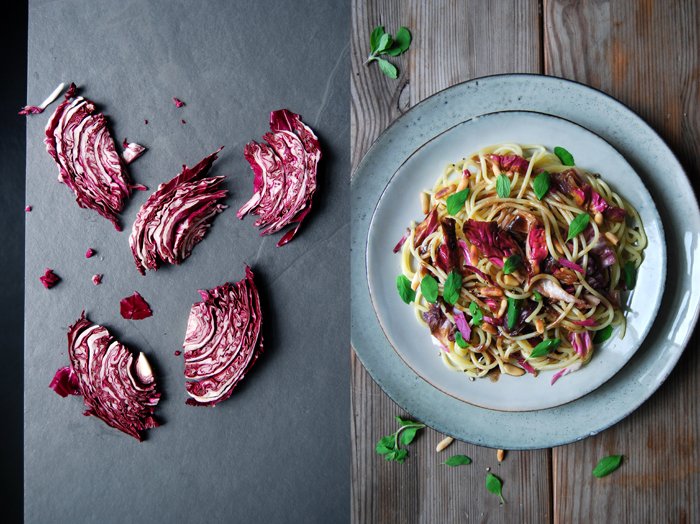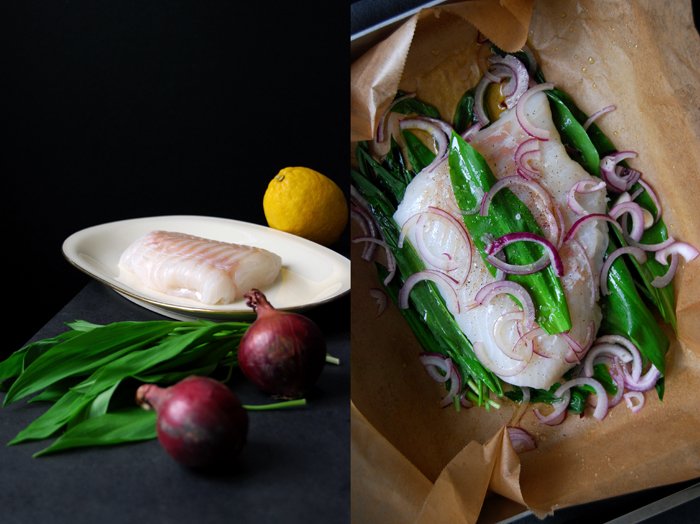About helping and sharing - and a Provençal Artichoke Quiche
Everybody's life can be a feast and a tragedy at times, it can be calm and peaceful in one second and rocky and rough in the next. In these moments, all of us need a helping hand or someone who listens. I believe, I know, that there's no one out there who wasn't ever in need of help. It starts when we're born, when our mothers are there for us, giving without asking for anything in return. That's love. And all along the way, we meet so many people who are there for us and reach out when in need. Shouldn't we all be willing to do so? Why is it so hard for some to show compassion and be there for the ones in need of help? Why can't we - as those who are much better off and on more stable ground - be there for the ones who are hurt, exiled and persecuted? I believe we should treat others as we would want to be treated. If we refuse to help why should we expect help when we are in a difficult situation?
My grandmother decided to leave East Germany when the wall - die Mauer - was being built, she had to flee with 6 children. They went to West Germany with literally nothing, they left their farm and land behind to escape a regime that she and her husband didn't want their children to grow up in. They were refugees in what was once their own country. But they weren't alone, many people helped them to build up their future, many shared the little they had and my family managed to get back on their feet. 40 years later, East Germany was in need of help, the people of the West gave a share of what they had, out of solidarity, to rebuild a part of the country that had suffered for decades. The people in the East received help. That's compassion. Today, hundred thousands of people are willing to risk their lives and leave their homes to seek help in Europe and other wealthy parts of the world, to escape political systems that are also no longer safe to live in. Wouldn't we all do the same? Didn't we do the same throughout the history of human kind?
Paul from the Einfach-Lecker-Essen blog started the Blogger für Flüchtlinge (Bloggers for Refugees) initiative with a few of his friends to call for support and collect donations for refugee camps, first only in Berlin, and now all over Germany. The movement is growing quickly and more and more stand up every day to give a helping hand to the ones in need. Please spread the word if you write a blog (#BloggerFuerFluechtlinge), you can support the initiative with a donation here.
Today's recipe is a dish that is practically made to be shared - a fragrant golden quiche. A quiche is like a friend, it always makes me feel good and at home wherever I am, it's down to earth comfort food. Add some preserved artichoke hearts, tomatoes, olives, thyme and aromatic Gruyère cheese to the filling and you have a late summer Provençal picnic tart. And when we sit there in peace, enjoying the food together with the ones we love, a scene that's so normal for most of us, we shouldn't forget that this is what everybody aspires to. Nothing more and nothing less.
Provençal Artichoke Quiche
For a 30cm / 12″ tart pan or baking dish you need
For the short crust base
plain flour 260g / 2 cups
salt 1 teaspoon
butter, cold 130g / 4 1/2 ounces
organic egg 1
For the filling
organic eggs 4
heavy cream 125ml / 1/2 cup
sour cream 175g / 3/4 cup
fresh thyme leaves 3 tablespoons plus a few sprigs for the topping
salt 1 teaspoon
ground pepper
nutmeg, freshly grated, a generous amount
large preserved artichoke hearts, cut in half (lengthwise), 3
black olives (preferably Kalamata) 10
cherry tomatoes, cut in half, 10
Gruyère cheese (or any other aromatic hard cheese), grated, 2-3 tablespoons
For the pastry, combine the flour and salt in a large bowl. Cut the butter with a knife into the flour until there are just little pieces of butter left. Continue with your fingers and rub the butter into the flour until combined. Add the egg and continue mixing with the hooks of your mixer until you have a crumbly mixture. Form a disc, wrap in cling film and put in the freezer for 12 minutes.
Set the oven to 200°C / 390°F (top/ bottom heat).
Roll out the dough between cling film and line the baking dish with the flat pastry. Prick it with a fork and blind-bake in the hot oven for 15 minutes or until golden.
Take the baking dish out of the oven and set the temperature down to 180°C / 355°F.
Whisk the eggs with the heavy cream, sour cream, thyme, salt, pepper and nutmeg.
Arrange the artichoke hearts, olives and tomatoes on top of the pre-baked pastry base, pour in the egg-cream mixture and sprinkle with cheese. Bake the quiche in the oven for about 55 minutes or until golden brown, the top should be firm. Let it cool for a few minutes and garnish with the thyme sprigs. Serve cold or warm.
Orange and Fennel Couscous with Orange Blossom Water and Mint
I decided to make couscous and cooked enough to feed a family of six - it shows that I don't work with this grain very often. The package looked tiny but the result was humongous! It didn't do the pleasure any harm though, the recipe was delish, we just had enough couscous for days.
Inspired by a phone call with my mother and our obligatory recipe exchanges, I mixed the earthy North African dish with crunchy fennel sliced like carpaccio and juicy orange fillets. To focus on the citrus a little more, I roasted orange peel in olive oil in the oven to create a fragrant oil and some crunchy citrus bites. An open bottle of orange blossom water in my fridge convinced me to go for an orange trilogy - a good choice. Each of them added their individual depth, texture and aroma: the juices of the fruit paired beautifully with the crisp peel and the flowery scented water. Fresh mint leaves on top to finish it off and three happy people at the table ate far more couscous than we ever have before.
Orange and Fennel Couscous with Orange Blossom Water and Mint
Serves 4
olive oil
long strips of orange peel 6
oranges, cut into fillets, 2
freshly squeezed orange juice 3 tablespoons (collected while cutting the fillets)
fennel bulb, very thinly sliced (like carpaccio), the green chopped, 1 (about 250g / 9 ounces)
couscous 300g / 10 1/2 ounces
quality orange blossom water (preferably organic), to taste
salt and pepper
fresh mint leaves, a small handful
Set the oven to 220°C / 430°F (top / bottom heat).
Pour 3 tablespoons of olive oil into a shallow baking dish, add the peel and cook in the oven for about 6 minutes until golden brown and crunchy, mind that the peel doesn't turn too dark. Take out of the oven and set aside.
To cut the orange into fillets, first peel off the outer skin with a knife and then cut off the white pith. Hold the orange in one hand and cut with the knife along the skin between the fruit's fillets to end up with skin-free fillets. Collect the juices.
For the couscous, put the grains in a large pot. In a kettle, bring double the amount of water to the boil (or adjust to the instructions on the package), pour the boiling water over the grains in the pot and close with a lid, let it sit for 5 minutes. It's not necessary to cook the couscous on heat.
Transfer the cooked couscous to a large, deep bowl and gently stir in the fennel, orange oil, orange fillets and about 3 tablespoons of the collected juices (to taste). Season with orange blossom water (about 1-3 teaspoons, depending on the brand), salt and pepper to taste. Add a little more olive oil if necessary and sprinkle with the roasted orange peel (broken into pieces), fresh mint and the chopped fennel green. Serve warm or as a cold salad.
Watermelon Caprese with Mozzarella di Bufala, Basil and Mint
The past few days on the island called for light and easy treats from the kitchen - it's been hot in Malta and quite a challenge for a northern girl like me. I witnessed 50°C (122°F) measured in the sun and, although I prefer warmth over cold, it's been beyond enjoyable. The sea is my daily escape, whenever I get the chance to jump into the cool waters, it feels like my brain cells finally start working again. There's a reason why life's pace is slower in the Mediterranean, the body just can't cope any other way. Luckily, we're off to Berlin today and we'll have 3 weeks to cool off a little before we get back to Malta's burning sun.
On the culinary side, I tried to defy the extreme weather conditions with lots of water, juicy peaches and melons. I noticed a growing watermelon trend in the web in the past few weeks that I had wanted to avoid. It felt like a flood of melon popsicle, melon soup and melon salad recipes - no need to bother you with another one on eat in my kitchen. But then, I thought of this delicious combination of chilled watermelon, creamy mozzarella di bufala, olive oil, sea salt, basil, mint and a little black pepper and I thought it wouldn't be fair not to share this easy pleasure. If you find yourself in the Mediterranean, or anywhere else in the world where the temperatures seem unbearable and where sweet and juicy watermelons are accessible, prepare a plate of melon caprese, slow down and relax!
Watermelon Caprese with Mozzarella di Bufala, Basil and Mint
Serves 3-4
chilled, ripe watermelon, sliced into thin triangles, 1/8-1/4
mozzarella di bufala, torn into bite sized pieces, 125g / 4 1/2oz
olive oil
fresh basil leaves about 16
fresh mint leaves about 8
flaky sea salt
black peppercorns, crushed in a mortar
Arrange the melon and mozzarella on a large plate, drizzle with a splash of olive oil and sprinkle with basil, mint, salt and pepper.
Peruvian Ceviche and my love of the sea
What I love the most about Malta - besides the wonderful people around us - is the sea. I can sit on one of the rocky beaches for hours staring at the sparkling shades of blue, the salty air in my nose and the the next seafood meal on my mind. Although I'm quite obsessed with snorkeling - I feel a great fascination for the beautiful wonders of Malta's amazing underwater life, I can't help but think about food when I'm close to the sea. We went to the fish market in Marsaxlokk as soon as we arrived and I couldn't resist filling the cooling box with the freshest tuna, swordfish, calamari, Cipullazza (scorpion fish) and sea bream.
The fisherman's wife at one of the stands made us try a selection of raw fish as I was on a mission. I've been wanting to make Peruvian ceviche for months and I decided that there's no better place for my culinary experiment than Malta with its daily catches from the sea. Ceviche is a traditional Peruvian dish made with raw fish marinated in lime juice for a few minutes. Although the citrus fruit's acid creates a chemical process similar to cooking I still wanted to use the freshest fish possible. I also felt that it would be appropriate to taste it raw first to approve the taste of my choice of fish. So we were right in the middle of the market, surrounded by lots of people and the most beautiful seafood offered on large tables when my experiment started. I just thought of sushi when I put one thin slice of fish after the other into my mouth. It felt a bit strange, especially after my fish-stand-lady told me that she would never eat raw fish. She had a mischievous smile on her face, but I trusted and survived.
I've never been to Peru so I decided to ask a woman for help who has lived in Lima for years, she's a passionate connoisseur and food writer. I met Sheila through eat in my kitchen, she is one of my blog's earliest readers and joined me on this journey with great support. We've never met in person but we felt a connection immediately through the universal language of food. My Peruvian lady is originally from Chicago but she dug deeply into her new home's kitchen culture. I knew that I was in the right hands when I asked her for a recipe - and I wasn't mistaken. Her directions led to the most delicious ceviche on our table in Malta, it was surprisingly quick and easy. And yes, lime juice kind of cooks the fish, I couldn't believe it when I saw (and tasted) it! Sheila recommended flounder but I went for Accola (Maltese amberjack) which was my favourite at my raw fish tasting session. I also added some lime zest which isn't usually done in Peru but I love the slightly flowery flavour it adds to the fish. It was quite an exciting kitchen experience but most importantly: my new seafood discovery made the most delicious lunch!
We also had a couple visitors to the island in the past few weeks. My mother decided to hop over for a spontaneous long weekend which we celebrated befittingly. We enjoyed a Maltese champagne picnic with the fantastic Cassar de Malte at a promenade in Valletta before we headed over to a new restaurant find - the Italian Scoglitti right at the sea. They treated us to a huge local Pagell (red snapper) in sea salt crust after we had already enjoyed octopus with potatoes, swordfish carpaccio and pulpetti tal-Makku (white bait pulpetti) along with Meridiana's white Isis wine. It was a feast finished with Maltese Mqaret (date sweets) - the delicious recipe will follow soon!
Another one of my most beloved seafood restaurants on the islands is Rew Rew at Mgarr ix-Xini in Gozo. Noel creates very pure dishes, honest simplicity, always cooked to perfection. We went to the little hidden bay a couple times this summer to enjoy local prawns from the BBQ, fried sardines and makku, grouper ravioli and Bazooka (deep sea snapper). Holly, my editor from New York, joined us on one of these visits and she was more than impressed.
I love the sea and all these wonderful frutti di mare, it's a gem we have to protect and treat with respect!
This recipe has been featured by Food52!
Sheila's Peruvian Ceviche
Serves 4-6
firm, white fish (such as flounder, sea bass or amberjack) 280g / 10oz
medium red onion, quartered, thinly sliced, 1/2
red aji límo (Peruvian habaneros), thinly sliced, 1/4 (to taste)
yellow aji límo, thinly sliced, 1/4 (to taste)
organic limes, zest and juice, 3
fine sea salt
Cut the fish into 1cm / 1/2" pieces. Lay the fish in a large sieve, rinse quickly with cold water, drain and dry with kitchen paper.
Pour the lime juice in a deep bowl, add the fish, toss it around and marinate for 2 1/2 minutes. Take the fish out with a slotted ladle and divide between plates. Garnish with onion and aji límo and sprinkle with salt and lime zest (optionally) to taste.
You can serve ceviche with cooked corn, sweet potatoes and lettuce.
Oregano Potato Salad, Grilled Prawns and Malta's Hidden Gems
Being back on my island feels unbelievably good! The past 10 days have been filled with lonely beaches, fishermen's villages, camping on a lonely island, new restaurant and ice cream shop discoveries, espresso breaks at traditional cafés and my obligatory (almost) daily visits to one of the countless pastizzerias. I'm in heaven - like every summer!
Whenever we go to Malta, I have a long list of things I definitely want to do while we're here. Our friends and family have the same idea, which means I have to plan well. The first 2 weeks tend to be packed with all the places I've been desperately wanting to visit in the past few months. My first day on the island is all about grocery shopping and a visit to my favourite vegetable man. Every Tuesday and Friday, the farmer Leli parks his mobile truck shop in Msida to offer his fresh produce under pink oleander trees. This man has the most charming eyes and the juiciest melons, peaches and tomatoes right from his fields. I stock up on Maltese sausages and Ġbejna (local sheep cheese) and sneak into one of the old village bakeries to buy far more bread than a family of 5 can possibly eat. But there's always the option to make a Panzanella (Tuscan bread salad) or a Maltese Bread Pudding with the leftovers, so there's no reason to feel bad. This year I finally went to Qormi, a town famous for its traditional bread baking skills. I literally followed my nose and spotted a tiny place in a side street which makes fantastic large loaves of sourdough bread, Ftiras (rings of breads) and soft aniseed buns. The two bakers Duminku and Glenn took time out to show me around and to my surprise, also shared the bakery's traditional Maltese bread recipe with me! So I'm planning on trying this recipe in my Maltese mama's kitchen and, hopefully, sharing the successful results with you soon. I asked Duminku for a recipe for 1 loaf which might have been a bit silly, 12 loaves was the minimum we could compromise on.
We spent another unforgettable afternoon at Ghar Lapsi in the south. After a long swim and snorkeling in the most mesmerizing crystal blue, we sat with an aperitif at Rita's, the rather old-fashioned Lapsi View Bar & Restaurant. My Aperol Spritz was the size of a fish bowl and the view of lonely Filfla island at sunset was so stunning that we decided to stay for dinner. It was a wise choice, the spider crab ravioli were to die for. Ice cream was next! My Maltese sister Emma insisted that we had to try Mario's creations at Ta' Skutu in Qrendi, a small family run business started in 1900, cooling their creations with ice blocks imported from Sicily. Besides the classic flavours, he also offers seasonal specialities, like beer or potato ice cream. I was truly struck by the sweets and the pretty, old interior (and the deer on the wall). But getting to know his chatty niece holding a white rabbit in her arm turned the visit into an almost Alice in Wonderland-like experience - the whole scene felt beautifully surreal. We finished the night at Mariano's farm (my farming and modeling brother in law) with an introduction to keeping sheep and a traditional Kusksu (Maltese bean soup) with homemade Ġbejna - freshly made from sheep milk which had been milked only 5 hours before.
A night of wild camping on Malta's small sister island Comino allowed us to enjoy a late evening and early morning swim at Blue Lagoon. This place is paradise as long as you don't join the day tourists turning the lagoon into a sardine tin during the day. It's a summer hotspot, the white beaches and turquoise water make you feel like you're in the middle of the Caribbean. We stayed in our tent at Santa Marija Bay and had the Blue Lagoon almost to ourselves after everybody had left.
My obligatory Sunday morning visit to the Marsaxlokk fish market inspired today's recipe: the most simple potato salad made with only 5 ingredients (potatoes, olive oil, Gozo sea salt, crushed pepper and fresh oregano) crowned by delicious prawns right from the BBQ.
This is sweet summer life!
Oregano Potato Salad, Grilled Prawns
For lunch for 2 you need
large prawns (wild, not farmed) 4-6
large waxy potatoes rinsed, scrubbed and cooked, 2-3
olive oil
flaky sea salt
black peppercorns, crushed in a mortar
fresh oregano leaves, 2-4 tablespoons
lemon 1/2
Grill the prawns on a BBQ or sear in a pan in a little oil on high heat.
Cut the potatoes into thick slices and divide them between 2 plates. Sprinkle with olive oil, salt, pepper and oregano. Serve with the prawns and fresh lemon juice.
Lemon Rosemary Potato Roesti
Sometimes, even the hottest day in summer calls for a hearty potato pan dish, like the Swiss roesti (or Röschti). This rustic dish is made of raw, grated potatoes fried in a heavy pan like a crisp pancake, or latkes, but without any eggs or flour. It's a very quick and easy meal, you just have to be brave when you turn it around (I use a large lid which simplifies this task noticeably). A roesti focuses on the pure taste of potatoes with a little help from salt and pepper. I allowed myself the addition of lemon zest and fresh rosemary to turn it into a more fragrant, summery dish.
I'm in Malta at the moment and this year I decided to cook a few recipes in advance to share on eat in my kitchen. I wanted to give myself some time to get used to my Mediterranean lifestyle and my Maltese mama's kitchen instead of sharing my recipes from here right from day 1 - like I did 12 months ago. It's been a very exciting year, with my cookbook being published next year, I've been cooking, baking and shooting tons of photos in the past couple months. So I decided to use the time in Malta to slow down my pace a little and to write the recipes and stories for my book. I'm very happy to be working from our family's old house in Msida. I hear the birds sing early in the morning as soon as I open the large glass doors to the garden, the smell of jasmine and stephanotis caressing my nose with their mesmerizing sweetness. The silence of the early day allows me to focus on my work before the hustle and bustle, chatting and laughter begins in the house. In a few days, I will start to write about my recipes cooked here in the south, from my beloved little island. Until then, I will enjoy the sun, the sea and all the wonderful people I've missed so badly for so long.
Lemon Rosemary Potato Roesti
For a 22cm / 9" cast iron pan (for 2 people) you need
waxy potatoes (raw), peeled and cut into match sticks, 400g / 14oz
lemon zest 2 heaping teaspoons plus 1/4 teaspoon for the topping
fresh rosemary, finely chopped, 2 heaping teaspoons, plus a few sprigs for the topping
fine sea salt 1/2 teaspoon
ground pepper
vegetable oil
black peppercorns, crushed in a mortar, for the topping
flaky sea salt, for the topping
In a bowl, mix the potatoes, zest, rosemary, salt and pepper with your fingers until well combined.
Heat 5 tablespoons of oil in a 22cm / 9" cast iron pan on high, add the potatoes to the pan, quickly spread them evenly and push them down with the back side of a tablespoon or a spatula. Turn down the heat immediately to medium / medium-high and cook for about 5 minutes, mind that the potatoes don't burn. Loosen the roesti from the sides of the pan with a spatula and lift it a little to check if the bottom side is done, it should be golden and light brown. If you prefer, loosen the roesti with the spatula from the bottom of the pan before you flip it over. Cover the pan with a large lid, and turn the pan carefully but quickly (it might be easier with the help of a second person). You should end up with the roesti on the lid. Put the pan back on the heat, add 1 tablespoon of oil and let the roesti slide off the lid into the pan. Cook for 5 minutes, add another minute on top on high heat if necessary. Serve right form the pan sprinkled with lemon zest, rosemary, crushed pepper and flaky sea salt or turn it onto a lid before you let it slide onto a plate.
Artichoke Omelette and Basil Pesto Ciabatta Sandwich
The inspiration for this sandwich comes from a lady who has been reading through almost all of my eat in my kitchen recipes in the past few weeks. She truly impressed me, not only because she soaked up hundreds of posts and stories, she also cooked many of the recipes in her kitchen and sent me the sweetest comments. We've never met, but here, on these pages, we share our passionate love for food.
A couple weeks ago, I found out that she loves to cook with artichokes as much as I do and she told me about an omelette she makes with the preserved vegetable. This genius idea never crossed my mind but when she mentioned it I knew instantly that I would turn this dish into a sandwich. I'm a big fan of juicy omelette sandwiches and I also love to sprinkle my bread with pesto, so this seemed like the perfect occasion to combine both treats. In the end, I also stuffed lots of fresh basil and rocket leaves inside the spongy ciabatta which added a fragrant Mediterranean flavour to the hearty eggs. It was fantastic, thank you, lady!
Artichoke Omelette Ciabatta Sandwich with Basil Pesto
For 3-4 sandwiches you need
For the pesto
fresh basil leaves 20g / 3/4oz
fresh mint leaves 2
pine nuts 1 tablespoon
Parmesan, freshly grated, 2 tablespoons
garlic, crushed, 1 small clove
olive oil 50ml / 1/4 cup
salt
Mix the ingredients for the pesto in a blender and season to taste.
For the omelette
organic eggs 3
heavy cream 50ml / 1/4 cup
freshly grated nutmeg
salt and pepper
large preserved artichoke hearts, quartered, 2
butter 1 heaping teaspoon
For the omelette, whisk the eggs, cream, nutmeg, salt and pepper. Heat half the butter in a small pan and sear the artichokes on high heat for about 2 minutes or until golden brown. Add the remaining butter and pour the egg mixture over the artichokes. Scramble very lightly and fold onto itself. When the bottom side starts to become golden flip it around. Brown it lightly from the other side for about a minute. Take the pan off the heat and cut the omelette into large chunks.
For the sandwich
medium ciabatta bread, cut into 3-4 buns
rocket (arugula) leaves, a small handful
fresh basil leaves 12
black peppercorns, crushed in a mortar
Lay a few rocket leaves on the bottom side of each sandwich, arrange the omelette on top and sprinkle with pesto, fresh basil leaves and crushed pepper. Close the sandwich and enjoy!
Spaghetti with Pan Roasted Fennel
A while ago, I cooked a fragrant pan full of crisp and golden fennel potatoes for us. I used fennel seeds and the vegetable's thinly sliced bulb for this recipe, it was so good that I promised myself that I would use this combination for pasta one day. It took more than 3 months but it's finally on our plates and my feeling was right, it works equally well with both.
The crisp vegetable adds a fresh touch to this dish, its distinct flavor is softer than the seeds, it's almost citrusy. The seeds however add a warming depth, I roast them in a little olive oil to enhance their fragrant aroma and turn them into crunchy bites. You just have to be careful not to burn them, they taste bitter if they become too dark.
It was a quick one, all in all this meal only took 10 minutes to prepare. Once you throw the pasta into the boiling water you only need 3 minutes to cook the fennel before you mix everything with flaky sea salt and coarsely crushed pepper. It's the perfect busy weekday or lazy weekend dinner!
Spaghetti with Pan Roasted Fennel
For 2 people you need
spaghetti 100g / 3 1/2oz
fennel seeds, lightly crushed in a mortar, 1 1/2 tablespoons
olive oil
medium fennel bulb, cut in half and the stalk cut off, very thinly sliced, 1
flaky sea salt
black peppercorns, crushed in a mortar
Cook the pasta in lots of salted water al dente.
Heat a splash of olive oil in a large heavy pan and cook the fennel seeds on medium heat for about 1 minute (they shouldn’t get dark!). Pull the pan off the heat, take the seeds out with a spoon and set them aside. Put the pan back on the heat and add the sliced fennel, sauté on medium heat for about 2-3 minute, the slices should be between al dente and soft. Stir in the spaghetti, fennel seeds and a splash of olive oil and season with sea salt and crushed pepper to taste, serve immediately.
Fennel Burger and Elderflower Onion Sandwich with Gruyère
If two passionate cooks are in a relationship you need a well thought-out kitchen plan. My boyfriend and I have a great passion for cooking, we love to experiment with recipes and ingredients but it just doesn't work at the same time. A cook is a leader and therefore needs total command in the kitchen to guarantee successful results. So many, many years ago we made a wise decision: depending on the recipe, one of us takes over control and has the last word when it comes to the important decisions, and the other one just assists. It works perfectly, no discussions and no arguments as long as we stick to the plan and don't get in each other's way.
Luckily, we love the same cuisine, Mediterranean and North European comfort dishes. The preparations are always quite relaxed and most of the time very satisfying at table. While chopping and cooking, there is often wine, cheese and olives involved to nibble and chill, I've mentioned it so often, it's definitely my favourite way to end a day. However, life would be boring, if two people had the same approach in the kitchen and we're definitely two absolutely different personalities. We find inspiration in different ingredients, flavours and combinations. My man likes it a bit more crazy, wild and experimental when he takes over the kitchen. He often combines flavours which seem too far apart to my mind, but the results are delicious and that's what counts.
A few days ago he came up with the genius idea to deglaze onions with elderflower syrup, it was fantastic! And to make it even better, he placed them on top of juicy fennel burgers. So, you need to know, when he uses our fennel seeds from Malta, he measures them by the tablespoon and not the teaspoon, the aroma is strong and present in this recipe and pure bliss in combination with the elderflower onion's smoky sweetness. There was also a thin layer of melted Gruyère cheese in between and at that point I knew I would have to share this recipe with you! I loved it!
Fennel Burger and Elderflower Onion Sandwich with Gruyère
For 8 burgers (or 4 hungry people) you need
For the sandwiches
medium onions, cut in half and thinly sliced, 3-4
butter 1-2 tablespoons
elderflower syrup, about 6 teaspoons, to taste
salt and pepper
rustic white buns, cut in half, 8
crisp lettuce, 8-16 small leaves
Gruyère cheese, 8-16 slices
For the burgers
minced beef 1 kg / 2 1/4 pounds
dry breadcrumbs 80g / 1/2 cup / 3oz
organic eggs 2
garlic, crushed, 2 cloves
fennel seeds, crushed in a mortar, 2 tablespoons
salt 3 teaspoons
pepper
butter 1-2 tablespoons
olive oil
Start with the onions and fry the burgers at the end, you want them to be hot enough to melt the cheese.
In a heavy pan, heat 1 tablespoon of butter and fry the onions for about 10-15 minutes until golden brown and soft. Add more butter if they dry out. When they are done, turn up the heat and deglaze with a splash of elderflower syrup. Season with salt and pepper to taste, take off the heat and set the pan aside.
Mix the ingredients for the burgers in a large bowl (with your hands or the hooks of an electric mixer) and form 8 thick burgers with wet hands. Heat a generous splash of olive oil and a tablespoon of butter in a heavy pan and fry the burgers on medium-high heat for 1 minute on each side, turn down the heat to medium-low and continue frying until they are golden brown, add more butter if necessary. The cooking time depends on how well done you like them, cut a burger in half to check the inside. Once they are done, lay 1-2 slices of cheese on top of each warm burger immediately.
Arrange 1-2 slices of lettuce on the bottom half of each bun, lay the burgers with the cheese on top and finish with the onions. Close the buns and enjoy!
Green Beans and Peas with Tahini Lemon Mayonnaise and Basil
I've never been a big fan of mayonnaise but this recipe changed everything, now I'm hooked on it! Mix this dip with a little tahini, juice and the zest of a lemon to lighten up it's rather heavy qualities and you'll understand what I'm talking about.
When it comes to mayonnaise, I've always been quite picky. The ones from the store are not an option for me at all, at least I've never found a good one. I always make my own from scratch like I learned from my mother, with good olive oil and fresh organic egg yolks. When it's mixed with crushed garlic, like the Spanish Aïoli, I can actually enjoy it a lot, especially when I have a fresh loaf of bread at hand.
So a few days ago I decided to make a fresh salad of greens, crunchy beans and peas quickly blanched until al dente. When I thought about the dressing I started to play around with different recipes in my mind. I had just received a culinary gift from a friend who just got back to Berlin after a quick visit to his family in Israel. He brought a huge jar of delicious tahini to my kitchen which I usually turn into hummus right away, but not this time. I mixed a spoonful of it with lemony and garlicky mayonnaise to top my summery salad sprinkled with spring onions and basil, it was more than delish!
Green Beans and Peas with Tahini Lemon Mayonnaise
You could whisk the mayonnaise by hand but I use a stick mixer and a small mug which guarantees a thick and creamy result.
For 2 as a lunch or 4 as a side dish you need
green beans, the ends snipped off, 550g / 1 1/4 pounds
peas, fresh or frozen, 140g / 5oz
salt and pepper
olive oil 1 tablespoon
small spring onion, cut into slim rings, 1
fresh basil, about 12 leaves
For the mayonnaise
garlic, crushed, 1 clove
freshly squeezed lemon juice 4 teaspoons
fresh organic egg yolks 2
quality olive oil 75ml / 1/3 cup
salt
tahini 1 tablespoon
lemon zest 2-3 teaspoons
In a large pot, blanch the peas in boiling salted water for 1 minute, take them out with a slotted ladle, rinse with cold water for a few seconds and drain. Use the same water, bring it to the boil and blanch the beans for 4-5 minutes or until al dente, drain and rinse with cold water. In a bowl, mix the beans and peas with 1 tablespoon of olive oil, season with salt and pepper and then arrange on plates.
For the mayonnaise, mix the garlic and lemon juice in a small bowl and set aside. Drop 2 egg yolks into a mug which should be just big enough for a stick mixer to fit in it. Pour 1/4 of the oil onto the egg yolks and start mixing with the stick mixer immediately, add more oil and the lemon garlic mixture, a little at a time, mixing constantly. When the dip is thick and creamy (after a few seconds) season with salt and whisk in the tahini and 1 1/2 teaspoons of lemon zest, season to taste. On the plates, spread a few dollops of the mayonnaise on top of the greens and sprinkle with spring onion, basil and lemon zest. Serve immediately.
Mediterranean Roast Vegetables with Tomatoes, Feta and Basil
The secret behind this scrumptious Mediterranean pan lies in the separate cooking of the vegetables. First, I sautéed sliced zucchini until golden but with bite, and then I cooked a large handful of aubergine and bell pepper chopped into tiny cubes. The small size let them release a little more of their juices in the hot pan, within minutes they turn into a chunky stew. Mixed with the zucchini, it just needed a bit of salt and pepper and it was done.
You could easily leave it at that but I was after a colourful pan full of fresh flavours. In summer, I like the combination of cooked and raw vegetables, so my pan got a crunchy topping with cherry tomatoes, milky feta chunks and fresh basil leaves. All the wonderful aromas of a Mediterranean garden on a plate! There are a million variations of this dish, you could top it with lemon ricotta (instead of the feta cheese) and make a moussaka, mix in some spaghetti for a richer meal or cook all the ingredients in the oven, like my vegetable casserole. So many options, so many warm months and ripe and tasty vegetables ahead of us. Kitchen life is just great at this time of year!
Mediterranean Roast Vegetables with Tomatoes, Feta and Basil
For a lunch for 2 you need
zucchini, sliced thinly, about 200g / 7oz
olive oil
salt and pepper
garlic, crushed, 2 cloves
aubergine, cut into tiny cubes, about 200g / 7oz
medium bell pepper (colour of your choice), cut into tiny cubes, 1
cherry tomatoes, cut in half, 8
feta cheese, broken into chunks, about 100g / 3 1/2oz
fresh basil leaves 10
Heat a slash of olive oil in a large pan and sauté the zucchini on medium-high heat until golden brown with a little bite. Season with salt and pepper to taste, transfer to a plate and set a side.
Put the pan back on the heat, pour in a splash of olive oil, stir in the garlic and let it turn golden (not brown!) for about 1 minute. Add the aubergine and bell pepper, season with salt and pepper and sauté until golden and soft. Take the pan off the heat, mix in the zucchini and tomatoes and season to taste. Stir in the feta and basil and serve immediately, or as a warm salad, with fresh ciabatta bread.
Roast Smashed Potatoes with Spring Onions, Garlicky Sour Cream & Sausages
There are two ways to enjoy this recipe: if the weather is nice and sunny, take out the barbecue and make it an outdoor treat, in case summer shows its grey and rainy face, just turn on the oven. Either way, I would always pre-cook the potatoes before you wrap and bake them in foil but I must confess that I'm an impatient soul, it's up to you. I've waited hours at BBQ's for the potatoes to be done, to avoid stretching my hunger unbearably I started to cook them beforehand until they are almost done. It's a bit sneaky, I know, but it tastes just as good.
This combination is a classic from the grill: potatoes, onions, sausages and a creamy dip. I smashed the sweet and soft root with my hand and topped it with one of the most delicious (and simple) dips I've eaten this spring, it's just sour cream whipped with olive oil, crushed spring garlic, salt and pepper, it's divine! It feels like a hint of mayonnaise which goes so well with potatoes but without its eggy heaviness. The roasted spring onions add a complementary spiciness and the German sausages are a BBQ must for me. I love my glass of wine for dinner but beer is the right choice in this case!
Grilled Smashed Potatoes with Roast Spring Onions, Garlicky Sour Cream & Sausages
For 2 you need
For the sour cream dip
sour cream 110g / 1 1/2 cups / 3 3/4oz
olive oil 1 tablespoon
fresh spring garlic, crushed, 1 small clove, to taste
salt and pepper
Whisk the ingredients for the dip and season to taste.
For the potatoes and onions
large, waxy potatoes with thin skin, rinsed and scrubbed, 2-3
small spring onions, cut in half lengthwise, 6-9
olive oil 1 tablespoon
coarse sea salt
black peppercorns, crushed in a mortar
Cook the potatoes in salted water until almost done, rinse with cold water and let them dry for a few minutes. Wrap in aluminium foil with a little sea salt and prick with a fork.
Coat the spring onions with the olive oil.
Option 1 - Bad Weather
Set the oven to 220°C / 430°F (top / bottom).
Spread the spring onions and the wrapped potatoes on a baking sheet, sprinkle the onions with salt and pepper and roast for about 15 minutes or until golden brown and crisp at the ends and the potatoes are soft (check with a fork). Turn the onions once while roasting. Unwrap the potatoes, smash them on the plates with your hand, top with a dollop of the dip, the roasted onions and a little more pepper.
Option 2 - BBQ Weather
Lay the wrapped potatoes close to the coal for a few minutes until soft, mind that they don't burn. Lay a piece of aluminium foil on top of the BBQ, prick the foil so that it has a few holes and spread the onions on top. Season with salt and pepper and grill until golden brown. Serve as described in the bad weather option.
Timpana - Maltese Pasta Pie with Zucchini and Aubergine
After a long discussion in the kitchen with my (Maltese!) boyfriend, I have to accept that my recipe is not a traditional Maltese timpana - but it tastes just as good, even my man agreed with that!
Timpana is a Mediterranean dish which is very popular in Malta and also in Italy. It's penne or macaroni pasta mixed with Bolognese sauce baked in a pastry shell - basically a pasta pie. My version, however, left out the meat sauce. I cooked a concentrated red sauce with fresh tomatoes and lots of basil instead and sautéed zucchini and aubergine slices until golden and juicy. So, here's the blatant difference, I piled the tomato basil pasta with layers of the sliced vegetables and parmesan in a buttery pastry shell, which, to me, justifies calling this dish Timpana. But sometimes opinions about food differ, especially when it comes to tradition recipes.
Obviously I ate my first Timpana in Malta, bought from one of the tiny bakeries you find at almost ever street corner in the towns and villages. They sell this pasta dish cut into large squares along trays full of buttery Pastizzi and rich ricotta filled Qassata. It's a street food lunch classic on the island. When I ate a piece of this hearty dish for first time, I didn't quite understand the concept of wrapping pasta in crisp short crust. But after years of enjoying at least 1 or 2 pasta pies during my stay in the South I got used to this tradition bite by bite. It just makes you feel good, it's delicious comfort food that combines the best of a pie with lighter comfort of fruity penne. I must admit that I prefer the addition of vegetables, the Bolognese sauce makes it a bit too rich and heavy for my taste. But I won't argue about that ever again, especially not with a Maltese person!
Timpana - Maltese Pasta Pie with Zucchini and Aubergine
For a 20 1/2cm / 8" pie (a loose bottom spring form works best) you need
For the filling
penne pasta 250g / 9oz
medium tomatoes, chopped, 6 (about 650g / 1 1/2 pounds)
fresh garlic (preferably spring garlic) 1 clove
salt
olive oil
tomato pasta (Kunserva) 1 tablespoon
balsamic vinegar 1 tablespoon
pepper
fresh basil, thinly sliced, about 12 large leaves
medium zucchini, cut into 1/2cm / 1/4" slices, 2 (about 380g / 13 1/2oz)
medium aubergine, cut into 1/2cm / 1/4" slices, 1 (about 270g / 9 1/2oz)
Parmesan, freshly grated, 5 tablespoons plus 1 teaspoon for the topping
Cook the pasta in salted water until al dente, they should have bite. Let the penne cool.
On a chopping board, rub and press the chopped garlic under the blade of a large knife with 1/4 teaspoon of salt until you have a smooth paste. Heat a splash of olive oil in a large pan, add the garlic paste, chopped tomatoes, tomato paste, vinegar, salt and pepper and cook on medium-high heat for about 10 minutes until thick. Stir in the basil and season to taste, make sure that the basil comes through quite strong. Let the sauce cool completely before you mix it with the cooked pasta.
In a heavy pan, heat a splash of olive oil and sauté the sliced zucchini on medium-high heat for 1-2 minutes on each side until golden brown. Cook them in batches, they should be spread out in the pan and not on top of each other. Season with salt and pepper and set them aside to cool. Heat a generous splash of olive oil and sauté the sliced aubergine in the same pan. They will need a little more oil (you'll have to add some in between batches) and they will also need to cook a bit longer, they should be golden brown, soft and juicy. Season to taste and set them aside to cool.
For the pastry
plain flour 300g / 2 1/3 cups / 10 1/2oz
salt 1 teaspoon
butter, cold, 150g / 1 1/4 sticks / 5 1/4 ounces
egg yolks 2
cold water 2 tablespoons
For the glaze
organic egg yolk 1
milk 1 tablespoon
a pinch of salt
Combine the flour with the salt. Cut the butter into the flour with a knife until there are just little pieces left. Continue with your fingers and quickly rub the butter into the flour. Add the eggs and water and continue mixing with the hooks of your mixer until you have a crumbly mixture. Form 2 discs, dividing them roughly 2:1, wrap in cling film and put in the freezer for 10 minutes.
The pie
Set the oven to 200°C / 390°F (top/ bottom heat).
Whisk the egg yolk, milk and salt for the glaze.
Take the dough out of the freezer and roll out both discs between cling film, the bigger piece (about 32cm / 12 1/2") for the bottom and the smaller one as the lid for the pie.
Line the bottom and sides of the spring form pan. Spread 1/3 of the pasta mixed with the tomato sauce on top of the pastry, sprinkle with 1/3 of the Parmesan and cover with a layer of aubergine (let the slices overlap a little). Continue with a second layer of pasta (1/3), sprinkle with Parmesan (1/3) and cover with the zucchini. Finish with the remaining pasta, cheese and vegetables (if there are some left). Close with the smaller pastry lid and gently push the rim with your fingers to seal the pie. Brush the top with the egg glaze and sprinkle with 1 teaspoon of the cheese.
Bake the pie for 15 minutes before you turn the heat down to 175°C / 350°F and bake for another 50 minutes or until the pie is golden and baked through. Let the pie cool for at least 15 minutes before you cut it into pieces.
Rhubarb and Leek Gratin with Rosemary
For weeks I have been thinking about combining leek and rhubarb in a gratin, the sourness of the fruity stalk and the onion's distinct spiciness seemed like a special match. Weeks and many other recipes have past, but I finally found the time to sit down and think about the right composition to make this duo work.
At first, I started off with a pinch of cardamom, this spice adds a nice warming touch, but something was still missing. I took a quick look at my herb garden in front of my bedroom window, that's the place where I keep all my little pots at the moment. The plants spread a mesmerizing smell in the afternoon sun and filled the air with the nicest aroma of rosemary, thyme, sage, oregano, marjoram, tarragon, chervil and lovage. I started to pick some thyme leaves but realised it would be too strong for my gratin, rosemary and its woody taste was the missing link in my composition, it made it complete!
Rhubarb and Leek Gratin with Rosemary
For 2 as a snack or 4 as a side dish you need
leek, cut in half lengthwise and cut into 6cm / 2 1/2" pieces, 250g / 1/2 pound
rhubarb, cut in half lengthwise and cut into 6cm / 2 1/2" pieces, 250g / 1/2 pound
olive oil
a pinch of ground cardamom
flaky sea salt
black peppercorns, crushed in a mortar
granulated sugar
fresh rosemary needles, chopped, for the topping
Set the oven to 200°C / 390°F (top / bottom heat) and oil the bottom of a baking dish.
Arrange the leek and rhubarb in circles in the baking dish and coat with 2 tablespoons of olive oil. Sprinkle with salt, pepper, cardamom and a little sugar. Bake in the oven for 20-25 minutes or until golden and soft. Sprinkle with fresh rosemary and season to taste.
Asparagus with Crisp Balsamic Bacon
All you need are 6 ingredients: green asparagus, bacon, balsamic vinegar, olive oil, salt and pepper! This is one of the easiest asparagus recipes we've had on our table this spring and I'm sure I'll cook it a few more times during this season. Its comforting heartiness combined with the vegetable's crunchy freshness is all I need when I sit at the kitchen table after a long day of work.
The preparation takes around 10 minutes which is also quite convenient. Green asparagus only needs a few minutes until it's cooked al dente and the bacon bites fried to salty crispiness don't take much longer. I deglazed the meat with a little white Balsamico vinegar which brings out its sweet side and fits so well with the green stalks. It's such an easy spring comfort dish!
Asparagus with Crisp Balsamic Bacon
For 2 people you need
green asparagus, the bottom part cut off, 500g / 1 pound
bacon, cut into tiny cubes, 80g / 3oz
olive oil
white balsamic vinegar 25 ml / 2 tablespoons
salt and pepper
Blanch the asparagus in salted water for 3-4 minutes or until al dente, drain and rinse with cold water for a second to keep its fresh colour.
Heat a splash of olive oil in a pan and fry the bacon for a few minutes on medium heat until golden brown and crisp. Deglaze with the vinegar, add the asparagus, stir gently and season with salt and pepper to taste, serve warm.
Potato, Chèvre and Rosemary Tart
Quite a few of the recipes that I have collected over time have become my culinary buddies, friends to celebrate good times just as much as giving me comfort when it gets tough. A savory tart, the wonderful French quiche, is definitely one of them. It's as easy and comforting as pizza and I can adapt the topping to my mood and the seasons, which I do with creative passion.
There's something about the buttery pastry base of a tart that gives me great satisfaction. An Italian pizza is a loud feast, preferably enjoyed in the company of friends. The base can be thin and crisp or oily and fluffy like a focaccia - the Italian oven classic is comfort food at its best, always. A quiche however, is more intimate, it's quite a sensual dish. The pastry needs to be thin (at least for my taste), crumbly and flaky. It's delicate, fragile, which makes it perfect for a romantic date or a picnic in the countryside. Add a glass of velvety red wine and you will have a lot of fun.
There are quite a few quiche recipes on the blog and I can't stop adding more: there's one with tomatoes and mozzarella, beans and ramp, with leek, one with fennel … Click here for the entire eat in my kitchen quiche collection. Today's recipe feels like a trip to the Provence, at the peak of summer. The potatoes give it a hearty touch - almost like a German quiche - yet the milky chèvre and woody rosemary make it light and take it right back to the Mediterranean.
Potato, Chèvre and Rosemary Tart
For a 30cm / 12″ tart pan or baking dish you need
For the short crust base
plain flour 260g / 2 cups
fine sea salt 1 teaspoon
butter, cold, 130g / 1/2 cup plus 1 tablespoon
large egg 1
Combine the flour and salt. Add the butter and cut it with a knife into the flour until there are just little pieces of butter left. Continue with your fingers and work the butter into the flour until combined (there shouldn’t be any lumps of butter left). Add the egg and continue mixing with the hooks of your mixer until you have a crumbly mixture. Form a disc, wrap in plastic wrap and put in the freezer for 10 minutes.
Set the oven to 200°C / 400°F (conventional setting).
Roll out the dough between plastic wrap then fit the dough into a 30cm / 12” quiche dish, pushing it into the dish. Prick the dough all over with a fork and bake for 15 minutes or until golden. If the dough bubbles up, push it down with a fork. Take the quiche dish out of the oven and reduce the temperature to 180°C / 350°F.
For the filling
large eggs 4
sour cream or crème fraîche 175g / 3/4 cup
heavy cream 120ml / 1/2 cup
fine sea salt 1 teaspoon
ground pepper
nutmeg, freshly grated, a generous amount
potatoes, boiled, peeled and sliced, 500g / 18 ounces
soft chèvre, broken into chunks, 110g / 4 ounces
fresh rosemary needles, a small handful
For the filling, whisk together the eggs, sour cream, heavy cream, salt, pepper and nutmeg.
Arrange the potatoes on top of the pre-baked pastry and season with a little salt, pepper and nutmeg. Sprinkle with the chèvre and rosemary then pour the egg mixture into the pastry base. Bake for 50 to 55 minutes or until golden, the top should be firm and the pastry crispy. Let it cool for a few minutes before serving.
Thyme and Lemon Ricotta stuffed Pork Roll
This scrumptious pork roll combines the hearty qualities of a juicy roast topped with crunchy crackling and the fresh spring feeling of ricotta, lemon zest, parmesan and thyme. If you liked my Bavarian Beer Roast for those cosy dinners at winter time, this is a great alternative for the warmer season, for a summery Sunday lunch under the bright blue sky and blossoming trees. It's the perfect recipe to feast with your friends, the table filled with plates of crisp asparagus tomato salad, loaves of homemade bread and pink glasses of chilled rosé wine - and the roast right in the middle!
You could use butterflied pork loin from a fully grown pig for this dish but I went for suckling pig. Its fine flavour and tender texture is exactly what you need if you want to roll up the loin with a light Mediterranean stuffing, no distractions, just the fine aromas merged with the meat.
Suckling pig is a traditional German dish, you can often see it at village feasts in the countryside, a whole pig roast on a spit over the open grill. The scene can be a bit intimidating, it's an archaic ritual - meat and fire. To me, it's part of our nature and as I decided to include meat in my diet, I also decided to confront myself with various cooking methods, even the ones that aren't as pleasing for the eyes as a schnitzel covered in breadcrumbs.
Thyme and Lemon Ricotta stuffed Pork Roll
For 6 people you need
suckling pork loin, boneless, butterflied, 1,2kg / 2 3/4 pounds
ricotta 225g / 8 ounces
freshly squeezed lemon juice 1 tablespoon
lemon zest 1 heaping tablespoon
Parmesan 1 heaping tablespoon
fresh thyme leaves, 1 heaping tablespoon
black peppercorns, crushed in a mortar, 1 teaspoon
fine sea salt 1 teaspoon
coarse sea salt, to sprinkle the roll
cotton string for the roll
Set the oven to 240°C / 465°F (I used the Rotitherm setting).
Whisk the ricotta, lemon juice, zest, parmesan, thyme, pepper and salt. Lay the meat out flat on the kitchen top and spread with the ricotta-spice mix, leave a 2 cm / 3/4" rim all the way round. Roll up the meat tightly without squeezing out the filling and tie with a cotton string every 3cm / 1". Sprinkle the skin generously with sea salt (push it into the skin a little), place the roll in a roasting dish and roast in the oven for 10 minutes. Turn down the heat to 175°C / 350°F and roast for 35 minutes. Turn on the grill until the skin starts to crackle. Take the meat out of the oven, wrap in aluminium foil and let it rest for 10 minutes before serving. Serve with asparagus tomato salad or a light potato salad.
The meat also tastes great cold, cut into thin slices, on a sandwich!
Froga tat-Tarja - Maltese Pasta Frittata with spicy Green Pesto
A few weeks ago, my boyfriend told my about this Maltese classic from his childhood days: Froga tat-Tarja, a golden pan fried pasta omelette. This is the essence of Southern comfort food, it works all year round, but I mixed in some spicy green pesto which gave it a fresh spring feel. I must admit that my initial plan was to go for basil pesto but my little Mediterranean kitchen plant looked too sad. I can see it trying so hard (and hopelessly) to grow more leaves so I couldn't bring myself to rip it up and leave it naked with only some slim stalks stuck into the soil.
I also had some rucola left and could have easily turned that into an aromatic pesto but you can imagine what happened next, ramp came to mind as always at this time of year and all other green pesto options were kicked out in a split second. It's garlicky spiciness combined with its really short season make it simply irresistible to me. So if you have any green pesto, some eggs and leftover pasta lying around in your kitchen, whisk it together, throw it in a pan like a pancake and fry until golden brown. Wonderfully easy comfort cooking, thanks to the leftovers!
Froga tat-Tarja - Maltese Pasta Frittata with spicy Green Pesto
For 1-2 people you need
leftover spaghetti or capelli di angelo, cold, 120g / 4 1/4oz
organic eggs, beaten, 2
ramp pesto, or any other green pesto, 1 heaping tablespoon plus more for the topping (recipe here)
salt 1/2 teaspoon
black peppercorns, crushed in a mortar, to taste
Parmesan, grated, for the topping
olive oil
Whisk the eggs, salt, pepper and pesto and mix with the pasta. Heat a splash of olive oil in a small pan (21cm / 8") and fry the egg pasta like an omelette until golden brown on both sides. Sprinkle with Parmesan and a little more pesto, season with salt and pepper to taste and serve immediately.
Radicchio and Balsamic Butter Spaghetti with Marjoram and Pine Nuts
Bitter radicchio, sweet and sour balsamic butter and flowery marjoram is a very powerful combination, every single flavour is dominant rather than subtle. They all scream for attention, but somehow manage to merge in this comfy pasta dish to create something bigger, a new taste that's beyond their individual qualities.
Whenever I savour a meal with spaghetti, I'm always impressed by how such an easy dish can make me feel so good, comfortable and cosy, and at the same time, caress me with its sensuality. The most simple and quickest pasta dish, be it carbonara, bolognese, pure red sauce, or just butter and parmesan, can feel like a Mediterranean feast, it makes me forget about duties and sorrows, it's a celebration of life. I guess that's also the reason why there's often wine involved, at least at my dinner table. It makes me want to have the windows wide open, dreamy music in the air carried away by a soft breeze, this is one of the most sensual meals in the whole world, spaghetti! Just thinking about it, writing about it, wakes up my senses, seeing the plate in front of me, smelling the teasing aroma of radicchio, vinegar, butter, nuts and fresh marjoram, makes me want to sing out loud and raise the glasses! Buon appetito!
Radicchio and Balsamic Butter Spaghetti with Marjoram and Pine Nuts
For 3-4 people you need
spaghetti 200g / 7 ounces
radicchio, quartered, stalk removed, cut into 1cm / 1/2" thick slices, 430g / 15 ounces
fresh marjoram, a small handful
pine nuts, toasted, 20g / 3/4 ounce
balsamic vinegar 30ml / 1 ounce
butter 50g / 1 3/4 ounces
a pinch of sugar
salt and pepper
olive oil
Cook the pasta in salted water al dente.
In a sauce pan, bring the vinegar to the boil and simmer for 1 minute. Take the pot off the heat and add the butter in 2-3 batches, let it melt in between and whisk well. Season with a pinch of sugar.
In a large pan, heat a splash of olive oil and sauté the slices of radicchio on medium-high for 1 minute on each side (it will fall apart, that's fine). Take the pan off the heat and season with salt and pepper. Gently mix in the warm pasta and balsamic butter and serve with pine seeds and marjoram leaves. On the plates, season with salt and pepper to taste.
Cod al Cartoccio with Ramp and Red Onion
My beloved ramp is back in season, ready to add its garlicky spiciness to fish, meat and vegetables, and to one of my favourites of course: fragrant ramp pesto!
I've been looking for it impatiently over the past few weeks and when I finally spotted the first bunch at my organic supermarket I had to call my boyfriend instantly, he's almost more obsessed with these green spring leaves than I am. We changed our dinner plans from gnocchi with blue cheese sauce to spaghetti with pesto, and that was just the beginning of our re-awakened green passion! Cod al cartoccio on a bed of ramp and red onions was next on my list. It's not only very delicious but also a very convenient match. I wrapped the fish in a parchment paper package with a little white wine, olive oil and lemon juice and cooked it in the oven for 15 minutes, all in all it took less than half an hour including the preparation! If you're still looking for a light and easy family Easter lunch, think al cartoccio. It cooks the fish to perfection while you can create your desired aroma of herbs and vegetables, it tastes divine and looks beautiful on the table.
Cod al Cartoccio with Ramp and Red Onion
For 2 people you need
cod fillet, about 2 1/2cm / 1" thick, 400g / 14 ounces
ramp, stalks cut off, a large bunch (about 50g / 1 3/4 ounces)
small red onion, cut in half and into thin slices, 1
white wine 2 tablespoons
freshly squeezed lemon juice 1 tablespoon
olive oil 2 tablespoons plus more for the parchment paper
sea salt and pepper
Set the oven to 200°C / 390°F (fan-assisted oven).
Cut 2 large pieces of parchment paper, big enough to wrap the fish, lay them on top of each other and brush the top layer with olive oil. Lay the ramp leaves in the middle of the oiled parchment paper (leave 2 leaves out and put aside), place the cod on top and season with salt and pepper. Lay 1 ramp leaf on top of the fillet and arrange the onions around the fish. Whisk the wine, olive oil and lemon juice and pour over the fish. Close the parchment paper like a bonbon and fold the top twice. Place in a baking dish and cook in the oven for 10-15 minutes. Check after 10 minutes, if you can separate the fish (gently) with a fork it's done, if it needs a little longer close the parchment paper and put back into the oven (mind not to overcook it!). Chop the raw ramp leaf and sprinkle over the cooked fish, serve with fresh baguette and a glass of chilled white wine!



